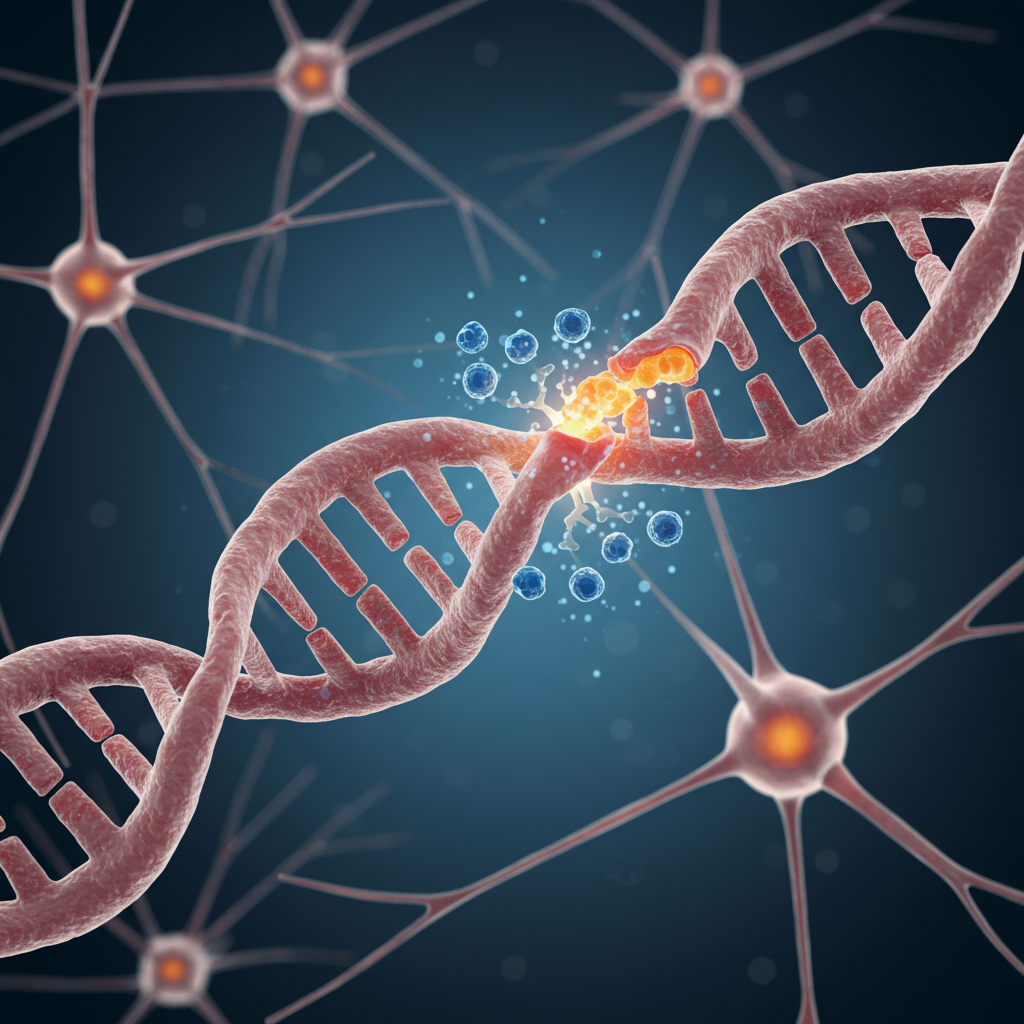A groundbreaking scientific achievement has just unveiled a new era of hope for individuals grappling with Huntington’s disease. For the first time, a specialized Huntington’s disease gene therapy has demonstrated a remarkable ability to significantly slow the progression of this devastating neurodegenerative condition. Preliminary results from a recent trial indicate that this innovative treatment could reduce disease advancement by an astonishing 75%, promising patients a dramatically improved quality of life and a brighter future. This breakthrough is more than just a medical milestone; it represents a profound shift in how we approach incurable brain disorders, moving from symptom management to actual disease modification.
Understanding the Devastation of Huntington’s Disease
Huntington’s disease (HD) stands as one of the cruellest inherited brain disorders. It systematically destroys brain cells, leading to a relentless decline in physical, mental, and emotional functions. Often referred to as having symptoms akin to dementia, Parkinson’s, and motor neurone disease, its impact is profoundly debilitating.
The Genetic Root of Huntington’s
This inherited brain disorder is caused by a faulty gene, specifically an excessive number of DNA repeats in the huntingtin gene. If a parent carries this mutation, there’s a 50% chance their child will inherit it. This genetic flaw leads to the production of a mutant huntingtin protein. This toxic protein slowly poisons neurons, causing them to die off and leading to a gradual loss of brain volume.
Symptoms typically begin between the ages of 35 and 55. Initially, these might manifest as subtle losses of coordination or mild forgetfulness. As the disease progresses, patients experience involuntary movements, severe mood swings, and a profound deterioration of memory and thought. Tragically, there have been no therapies to date that address this root cause. Previous treatments focused solely on alleviating symptoms, leaving patients and their families with a sense of helplessness as the disease advanced, usually proving fatal within two decades of onset.
A New Frontier: Gene Therapy Offers Hope
The landscape for Huntington’s disease treatment is now changing dramatically. The focus has shifted toward advanced genetic therapies, offering a one-time intervention designed to alter the disease’s course permanently. This represents a monumental leap forward, moving beyond palliative care to a potential Huntington’s disease gene therapy that directly targets the underlying genetic flaw.
From Setbacks to Breakthroughs
Early attempts to develop disease-modifying treatments included antisense therapy. This approach aimed to “dial down” the production of the defective huntingtin protein using short strands of DNA or RNA. While initially promising, hopes dimmed after a leading candidate failed in late-stage testing in 2021. This setback redirected scientific attention toward a different, more permanent strategy: gene therapy. This approach aims to silence or modify the deficient gene at its source, offering a lasting solution.
AMT-130: The Revolutionary Gene Therapy
The groundbreaking treatment, known as AMT-130, is developed by uniQure, a gene-therapy company based in Amsterdam. This specific Huntington’s disease gene therapy employs a harmless, modified virus (an AAV5 vector) as a delivery system. This microscopic “postman” carries a specially designed DNA sequence directly into affected brain cells.
How AMT-130 Works at a Molecular Level
Once inside the neurons, this new DNA transforms them into “factories” producing a therapeutic microRNA. This microRNA acts as a molecular “muzzle.” It intercepts and disables the messenger RNA (mRNA) instructions responsible for building the toxic mutant huntingtin protein. By blocking these instructions, AMT-130 effectively stops cells from producing the faulty protein, thereby reducing its toxic levels in the brain. The virus-encoded instructions remain inside the cells, ensuring continuous production of the therapeutic microRNA. This elegant molecular mechanism offers a potential lifelong reduction in the protein causing brain cell death.
Unpacking the Clinical Trial Results
The excitement surrounding AMT-130 stems from the compelling preliminary results of a small but pivotal trial. The study involved 29 participants who were in the early stages of Huntington’s-related decline, conducted across sites in the UK and US, including University College London.
Significant Slowing of Disease Progression
Patients who received a high dose of the therapy directly into their brains experienced an average 75% slowing of the disease over three years compared to a control group. Professor Sarah Tabrizi, director of the UCL Huntington’s Disease Centre and a leader in the trial, described these results as “spectacular.” She highlighted that a decline typically expected in one year could now take four years, potentially offering patients decades of “good quality life.”
The benefit was statistically significant across several clinical measures. These included composite assessments of cognition, motor function, and the patients’ ability to manage daily life. Crucially, researchers also observed a reduction in neurofilament levels in the spinal fluid. Neurofilaments are a marker of brain cell death; lower levels in treated patients, contrasting with an expected one-third increase, indicated brain cell preservation. Walid Abi-Saab, uniQure’s chief medical officer, expressed enthusiasm, stating these findings reinforce the conviction that AMT-130 could “fundamentally transform the treatment landscape.”
Expert Validation
Sandra Kostyk, a neurologist at the Ohio State University Wexner Medical Center involved in the trial, affirmed that “The data look quite good.” Professor Ed Wild of UCL called the magnitude of the effect “breathtaking.” These expert opinions underscore the profound implications of this Huntington’s disease gene therapy. While results are still unpublished and should be viewed as preliminary, uniQure plans to seek regulatory approval next year, with applications anticipated in the US in early 2026.
The Procedure: A Delicate Intervention
Administering this Huntington’s disease gene therapy is a complex medical feat, requiring intricate neurosurgery. The procedure typically takes between 12 and 20 hours. Clinicians use real-time magnetic resonance imaging (MRI) to precisely guide a micro-catheter through small holes in the skull. The therapy is then slowly infused into two specific brain regions: the caudate nucleus and the putamen, collectively part of the striatum. These areas are among the first and hardest hit by Huntington’s disease. Despite the delicacy, patients in the trial generally tolerated the procedure well, with manageable, temporary side effects like headaches and confusion. A single injection is believed to be sufficient, offering a permanent reduction in toxic huntingtin protein levels.
A New Future for Patients and Families
This breakthrough heralds profound personal impact for those affected by Huntington’s disease. Jack May-Davis, 30, who inherited the faulty gene after witnessing his father’s and grandmother’s decline, described the news as “absolutely incredible,” offering him a future that “seems a little bit brighter.” Robyn Perry, 34, who also carries the gene, expressed immense joy and tears with her community, stating it “means absolutely everything for us and our families.”
Shifting Perspectives on Genetic Testing
Historically, only about a fifth of individuals at risk for Huntington’s chose genetic testing. This was largely due to the lack of disease-modifying treatments. With the emergence of this Huntington’s disease gene therapy, experts like Professor Tabrizi anticipate a significant increase in people seeking genetic confirmation. The potential for patients to maintain independence, work longer, and enjoy a higher quality of life for decades longer changes the calculus entirely.
Challenges and the Road Ahead
Despite the immense promise, the path forward includes challenges. The current results are preliminary and require larger, more extensive studies to confirm long-term safety, efficacy, and duration of benefits. Zofia Miedzybrodzka from the University of Aberdeen cautions that it’s “still early days,” emphasizing the need for more comprehensive data.
Cost and Accessibility
The complexity of the neurosurgery and the advanced nature of this Huntington’s disease gene therapy mean it will likely be very expensive. This could initially limit widespread access. However, Professor Tabrizi views this as “the beginning,” believing it will open doors for future therapies that reach more people. UniQure plans to discuss regulatory approval with UK and European authorities, aiming for a potential launch before 2027.
Broader Implications for Neurodegenerative Research
Perhaps one of the most exciting aspects is the potential broader applicability of this gene therapy approach. If successful for Huntington’s, researchers believe this strategy could pave the way for similar therapies for other neurodegenerative conditions, such as Parkinson’s disease or various forms of dementia. By adapting the genetic material to target specific toxic proteins associated with those diseases, this Huntington’s disease gene therapy could become a versatile therapeutic platform, transforming treatment across multiple neurological disorders. This opens an entirely new chapter in neuroscience, offering hope far beyond Huntington’s.
Frequently Asked Questions
What is Huntington’s disease, and why is this gene therapy a breakthrough?
Huntington’s disease is a severe, inherited neurodegenerative condition caused by a faulty gene that produces a toxic protein, progressively killing brain cells. It leads to uncontrolled movements, cognitive decline, and mood changes, with no prior cure. This gene therapy is a breakthrough because it’s the first treatment to actively slow the disease’s progression, demonstrating a 75% reduction in decline over three years by targeting the root cause: the production of the harmful protein. This shifts the paradigm from merely managing symptoms to fundamentally altering the disease’s course.
How does the AMT-130 gene therapy for Huntington’s disease work?
The AMT-130 Huntington’s disease gene therapy uses a modified, harmless virus (AAV5 vector) to deliver new genetic instructions directly into brain cells. Once inside, these cells begin producing a therapeutic microRNA. This microRNA acts as a “molecular muzzle,” blocking the messenger RNA (mRNA) instructions that tell the cells to create the toxic mutant huntingtin protein. By stopping the production of this harmful protein at its source, the therapy aims to prevent further brain cell damage and slow the disease’s advance, offering a potentially permanent, one-time treatment.
What are the next steps for patients and the medical community regarding this gene therapy?
For patients, this breakthrough offers immense hope and may encourage more individuals to undergo genetic testing for Huntington’s disease, as a disease-modifying treatment is now on the horizon. For the medical community, the next steps involve larger-scale clinical trials to confirm the preliminary results, assess long-term safety, and optimize treatment protocols. UniQure plans to seek regulatory approval from bodies like the FDA in early 2026, with a potential market launch before 2027. Researchers are also exploring prevention trials for individuals with the gene but without symptoms, and considering the applicability of this gene therapy platform to other neurodegenerative conditions.
Conclusion
The preliminary success of this Huntington’s disease gene therapy marks a historic turning point in the fight against neurodegenerative diseases. By demonstrating the ability to slow disease progression by a remarkable 75%, this one-time treatment offers more than just medical advancement—it offers renewed hope for thousands of patients and their families worldwide. While larger studies and regulatory approvals are still on the horizon, the profound implications of this breakthrough are undeniable. It signifies a future where devastating inherited brain disorders might not only be managed but genuinely modified, paving the way for a new era of neurological medicine and dramatically improving the lives of those impacted.




